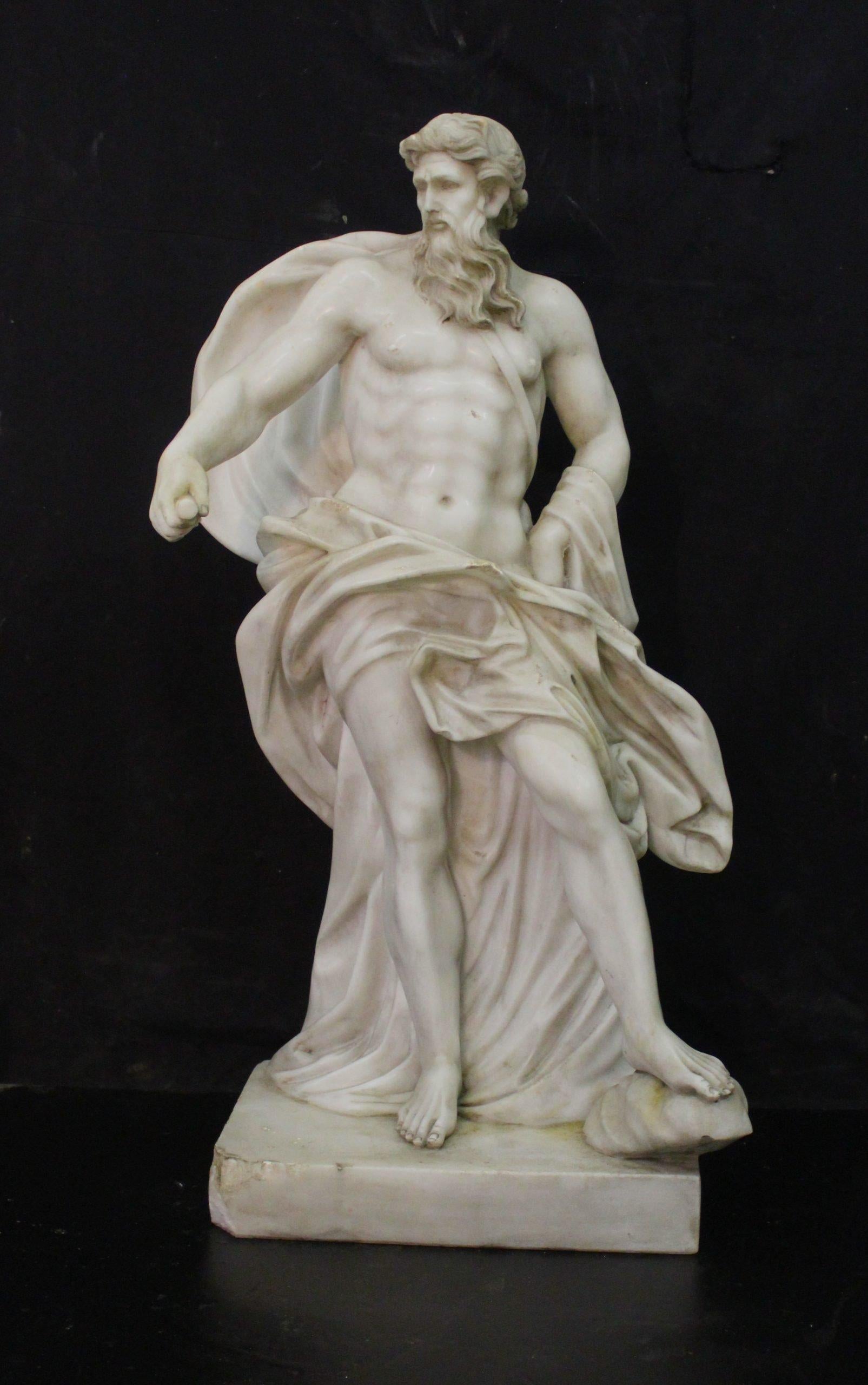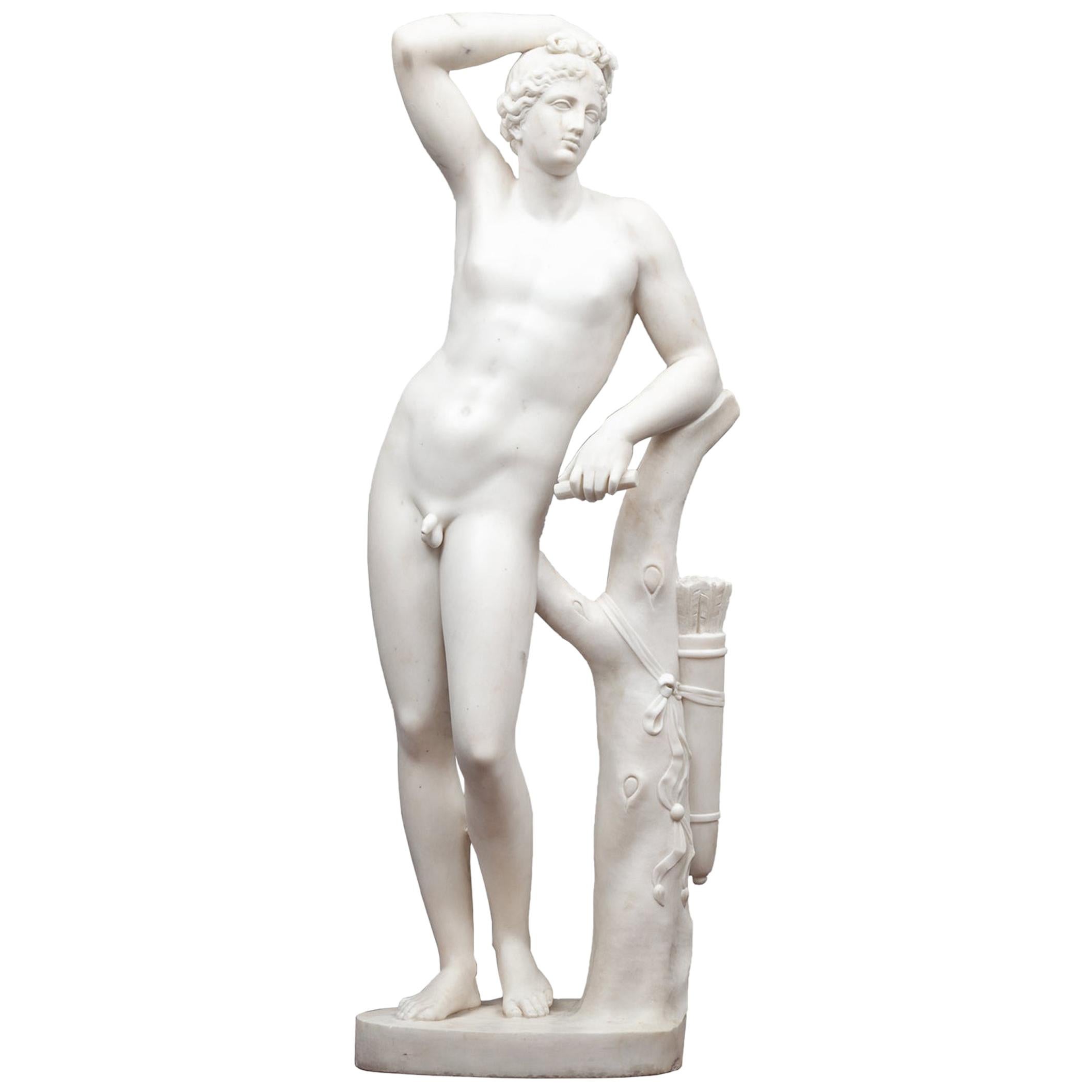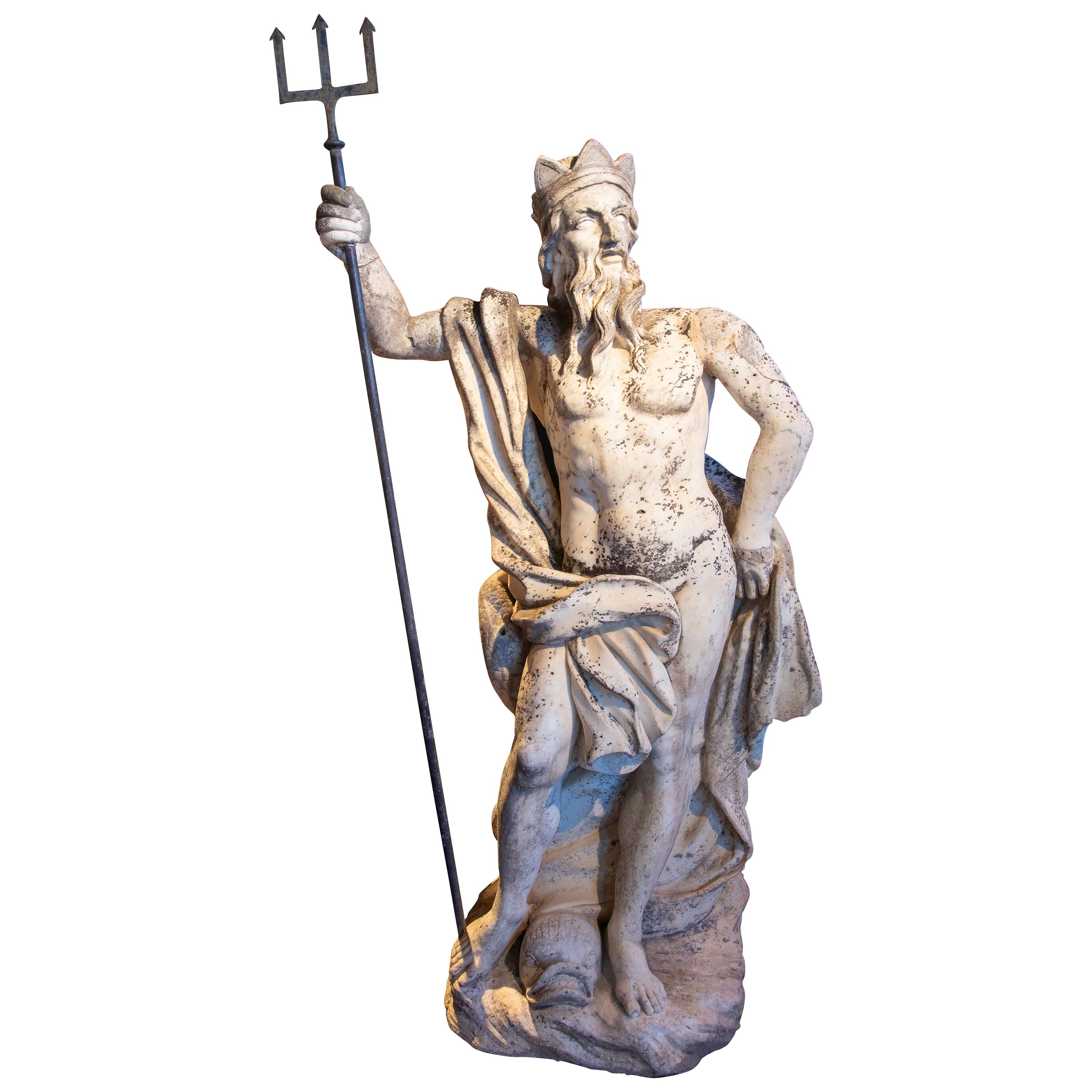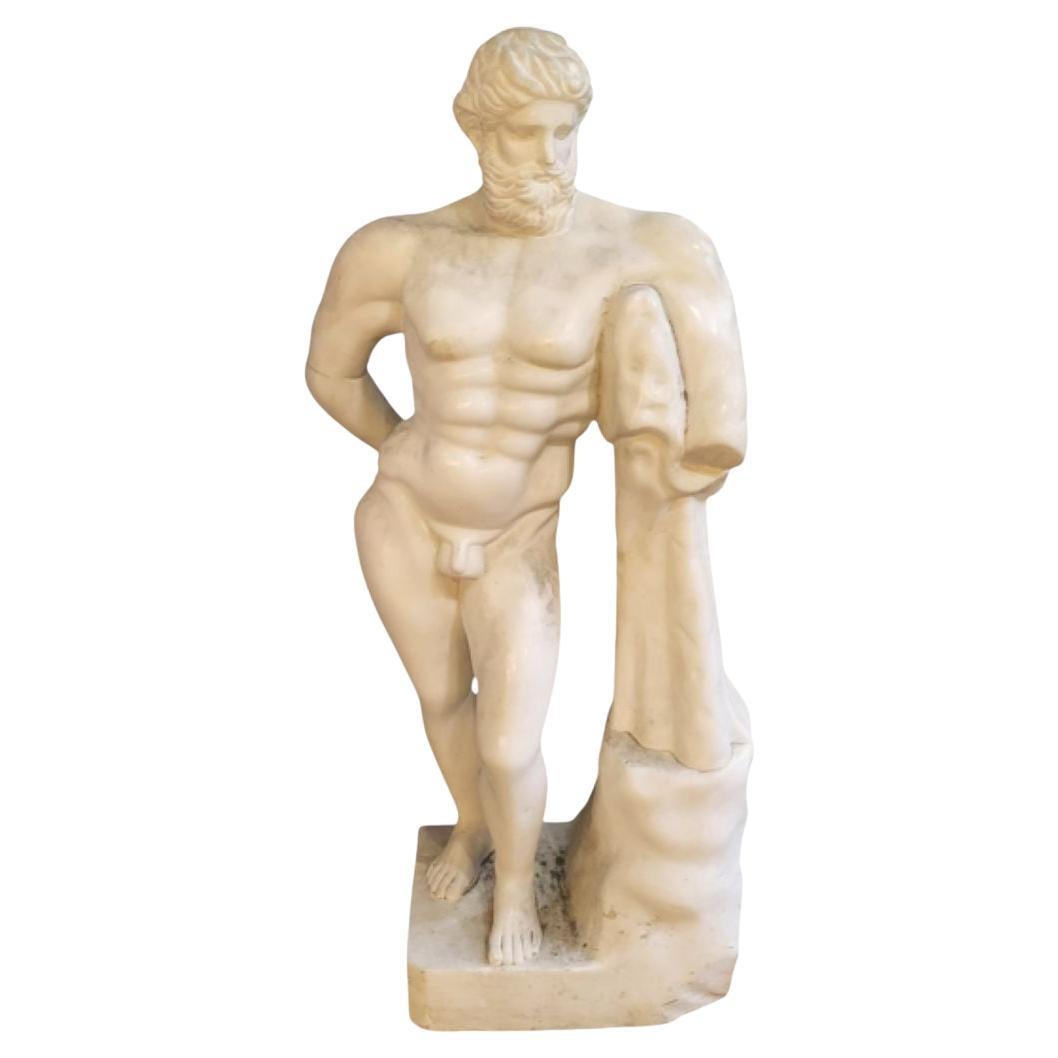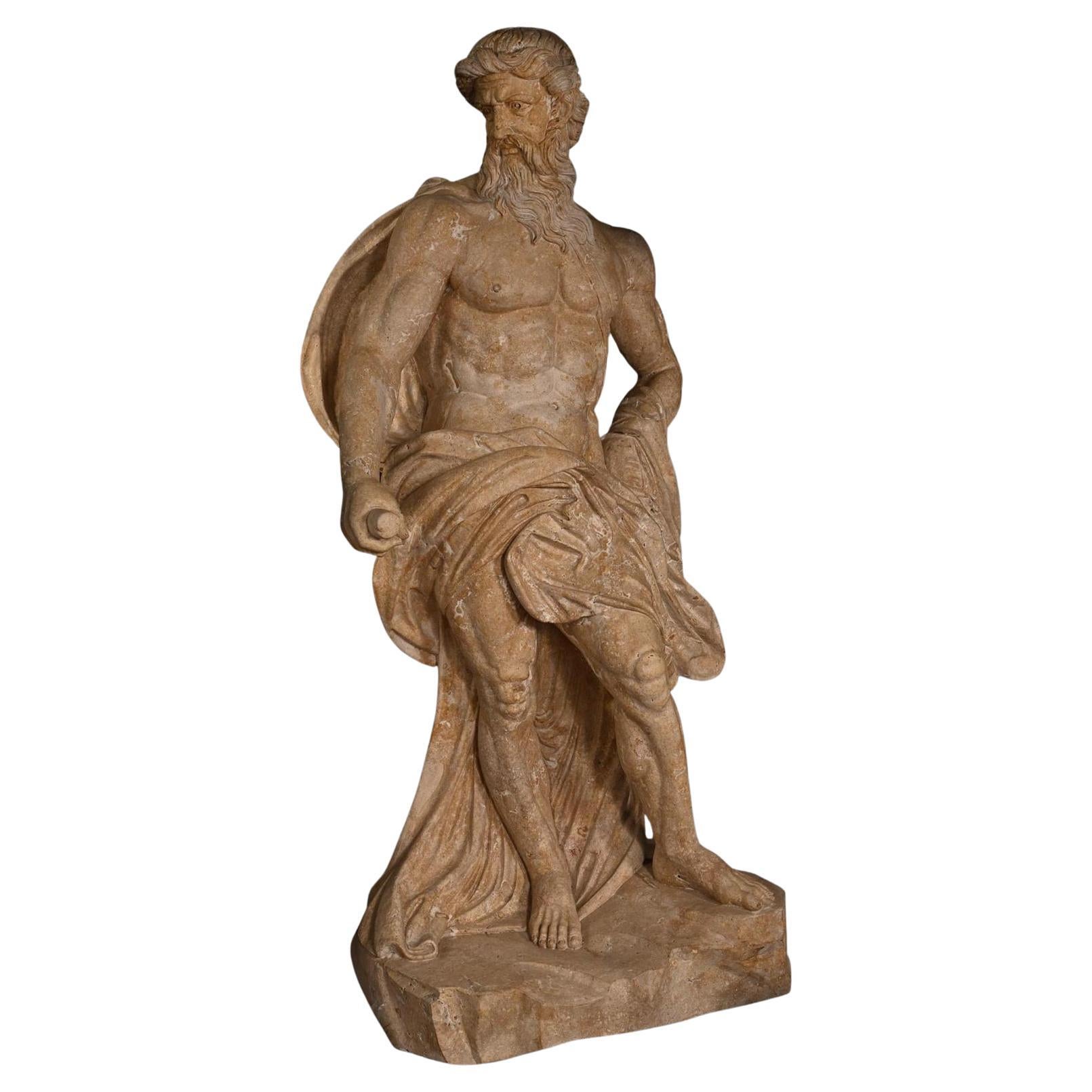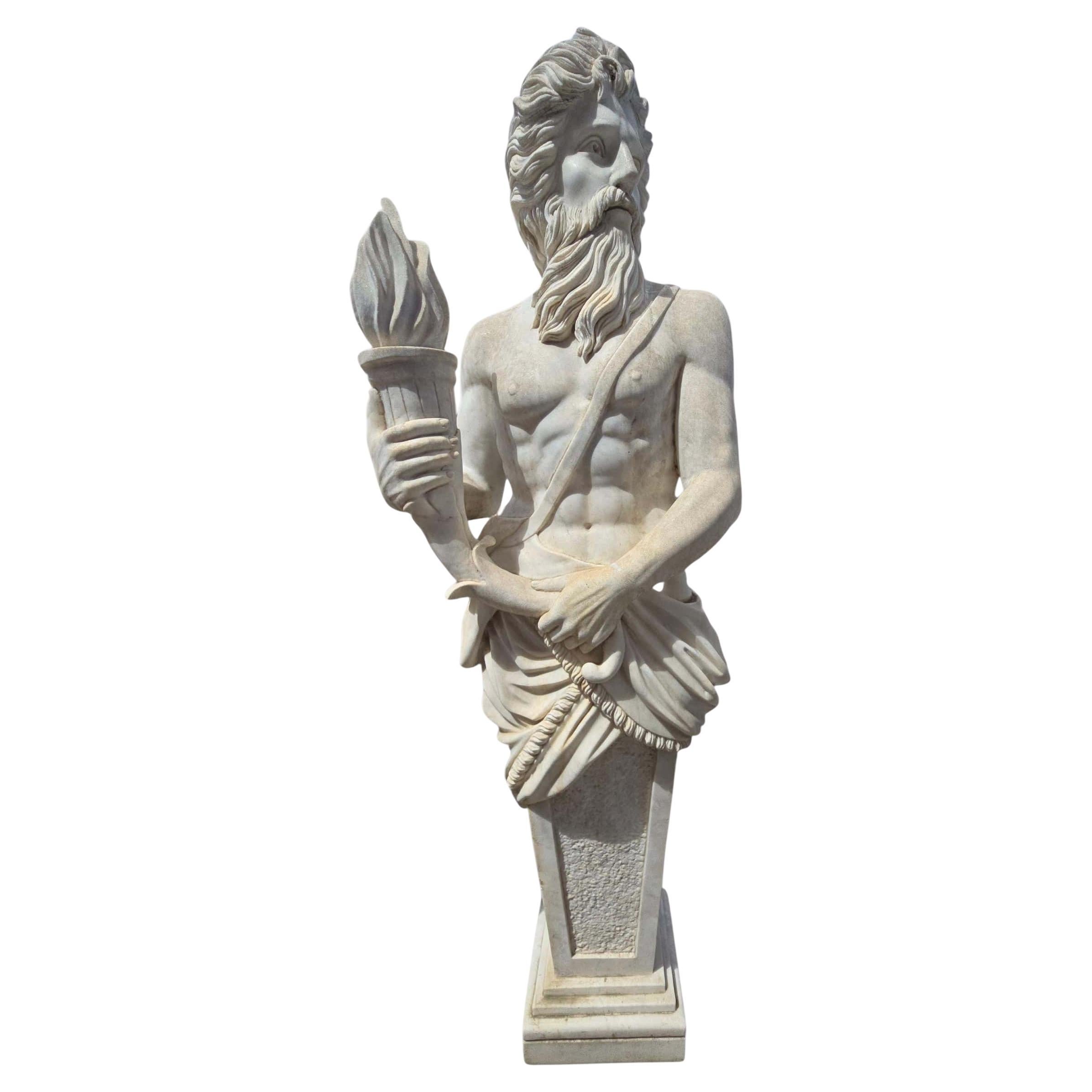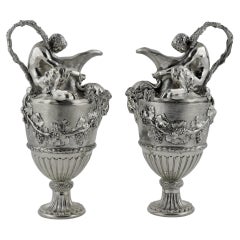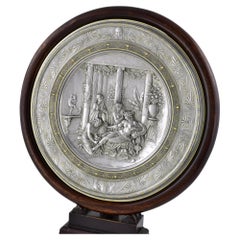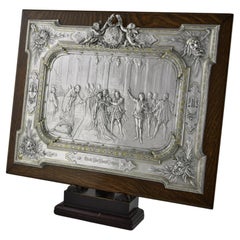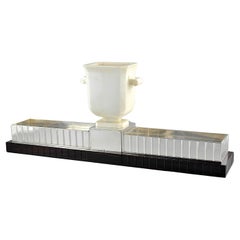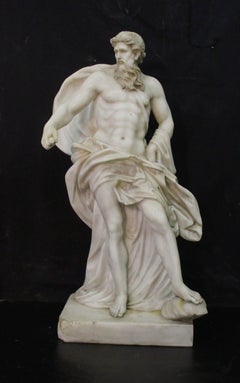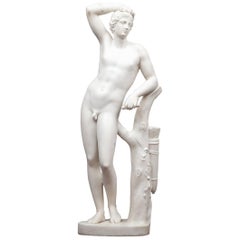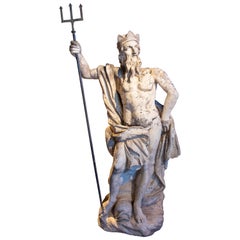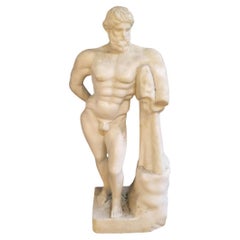Items Similar to A 16th century carved marble sculpture of poseidon
Want more images or videos?
Request additional images or videos from the seller
1 of 8
A 16th century carved marble sculpture of poseidon
$77,825
£58,000
€67,128.11
CA$109,371.37
A$118,925.79
CHF 62,662.28
MX$1,444,603.29
NOK 787,791.39
SEK 738,490.80
DKK 503,737.90
About the Item
This fine and imposing sculpture is an excellent example of 16th century Italian craftsmanship. The figure is stood on a raised, shaped rectangular base with a carved "dolphin" at the figure's right heel. Part robed, the figure stands with the left arm held aloft holding a fish.
Whilst signed and dated "P. Torregiano 1521" purportedly for Pietro Torrigiano (24 November 1472 – July/August 1528), it is almost certainly a later piece and is likely to have been made within the circles of sculptors such as Michelangelo Naccherino (Florence, March 6, 1550 – Naples, February, 1622) in the late 16th century.
- Dimensions:Height: 61.82 in (157 cm)Width: 27.56 in (70 cm)Depth: 17.72 in (45 cm)
- Style:Renaissance (Of the Period)
- Materials and Techniques:
- Place of Origin:
- Period:
- Date of Manufacture:circa 1580
- Condition:Repaired: apparent but sympathetic repairs to the left arm and nose. Wear consistent with age and use. Minor fading.
- Seller Location:London, GB
- Reference Number:1stDibs: LU8883238078742
About the Seller
No Reviews Yet
Recognized Seller
These prestigious sellers are industry leaders and represent the highest echelon for item quality and design.
1stDibs seller since 2023
Typical response time: 8 hours
- ShippingRetrieving quote...Shipping from: London, United Kingdom
- Return Policy
Authenticity Guarantee
In the unlikely event there’s an issue with an item’s authenticity, contact us within 1 year for a full refund. DetailsMoney-Back Guarantee
If your item is not as described, is damaged in transit, or does not arrive, contact us within 7 days for a full refund. Details24-Hour Cancellation
You have a 24-hour grace period in which to reconsider your purchase, with no questions asked.Vetted Professional Sellers
Our world-class sellers must adhere to strict standards for service and quality, maintaining the integrity of our listings.Price-Match Guarantee
If you find that a seller listed the same item for a lower price elsewhere, we’ll match it.Trusted Global Delivery
Our best-in-class carrier network provides specialized shipping options worldwide, including custom delivery.More From This Seller
View AllPair of Decorative Ewer Form Ornaments
Located in London, GB
The body of each ewer is beautifully embellished with a three dimensional design of grapevines following up to the handle. The handle part forms as a satyr, possibly representative o...
Category
Antique Late 19th Century French Neoclassical Figurative Sculptures
Materials
Silver Plate
$7,782 / set
'The Pompeian Lady' by Elkington & Co
By Elkington & Co.
Located in London, GB
This parcel gilt silver plated electroform plaque by Elkington & Co illustrates 'A Pompeian Lady'. 'A Pompeian Lady' was a masterpiece made of silver and damascened steel by the Fre...
Category
Antique 19th Century British Victorian Sheffield and Silverplate
Materials
Silver Plate
'Much Ado About Nothing' by Elkington
By Elkington & Co.
Located in London, GB
This parcel-gilt silver plated electrotype plaque demonstrates a marriage scene from the popular play "Much Ado About Nothing" by Shakespeare. Each corner is further embellished with masks of 'Comedy' and 'Tragedy', symbols that are common in drama to highlight the disparity between comedy and tragedy. At the top of the plaque is a portrait of Shakespeare crowned with a laurel wreath by two flanking putti. The bottom of the plaque reads the title 'Much Ado About Nothing'. The plaque is attached onto a wood frame. The masterpiece for this electrotype in The Museum of Fine Art Boston.
Biography - The Artist
Leonard Morel-Ladeuil trained in Paris workshop of Antoine Vecht (1799-1869). Leonard Morel-Ladeuil and Elkington collaborated on a number of pieces, most notably The Milton Shield...
Category
Antique 19th Century British Sheffield and Silverplate
Materials
Silver Plate
A French Art Deco Silver & Alabaster Centrepiece On A Macassar Ebony Plinth
Located in London, GB
Marks for Maurice Daurat, Paris circa 1930
The Alabaster vase is electrically lit from within.
Provenance: Private European Collector, 'The Seawolf Collection', Object No.151 and p...
Category
Vintage 1930s Sterling Silver
Materials
Silver
The Temperance/ Rosewater Basin by Elkington
Located in London, GB
The original Temperance Basin was made by François Briot around 1585 and was acquired by the V&A in 1855. The most notable reproduction is the silver gilt Wimbledon Ladies Singles Ch...
Category
Antique 19th Century Sheffield and Silverplate
Materials
Silver Plate
A monumental Italian part gilded sterling silver aquarium.
By Mazzucato
Located in London, GB
Unlike any piece that we have ever offered before, this monumental & heavy quality sterling silver aquarium is formed with an oval base mounted with two silver half-shells mounted with fish sea-foliage and crustaceans and fish, the central column and tank surround formed as a massive coral and foliate reef similarly adorned with part-gilded silver fish, crabs, lobsters, sea-snails, seahorses, octopus etc. With removable cuboid glass tank & two specimen-hard-stone and silver aquatic sculptures...
Category
Late 20th Century Italian Baroque Sterling Silver
Materials
Sterling Silver
You May Also Like
Marble sculpture of Oceanus 102 cm
Located in Rome, IT
Sculpture of Oceanus in Carrara marble, 20th century, the sculpture is a copy of the one made by Nicola Salvi 1732 and Giuseppe Pannini 1762, for the Trevi fountain. ADDITIONAL PHOTO...
Category
20th Century Italian Figurative Sculptures
Materials
Marble
Antique Neoclassical Statuary Marble Statue
Located in Tyrone, Northern Ireland
A beautifully carved antique statuary Carrara marble statue of Adonis. The male figure is depicted in the nude leaning against a tree.
Adonis was the mortal lover of the goddess Aph...
Category
Antique Late 19th Century Italian Neoclassical Figurative Sculptures
Materials
Carrara Marble
18th Century Monumental Marble Sculpture Representing Neptune
Located in Marbella, ES
18th Century Monumental Marble Sculpture Representing Neptune
Category
Antique 18th Century Italian Figurative Sculptures
Materials
Marble
Realistic Marble Statue of Hercules
Located in London, GB
A Realistic Marble Statue of Hercules after the Ancient Model
Stands at almost 1 meter Tall
Category
Mid-20th Century Unknown Classical Greek Figurative Sculptures
Materials
Marble
Life-Size Greek Mythological Sculpture in Travertine Marble – Italy
Located in Madrid, ES
Magnificent life-size sculpture inspired by Greek mythology, finely carved in travertine marble. An impressive work showcasing the classical beauty and proportions of ancient Greek a...
Category
Vintage 1950s Statues
Materials
Marble
Large Hand-Carved Italian Marble Allegorical Sculpture, 180 CM
Located in Madrid, ES
Impressive allegorical marble sculpture, hand-carved in Italy, likely representing Winter. The figure is rendered with serene expression and classical drapery, possibly holding or we...
Category
Vintage 1980s Figurative Sculptures
Materials
Marble
More Ways To Browse
Carved Dolphin
Dolphin Figure
Poseidon Sculpture
Four Seasons Series
Indian Goddess
Italian Wood Carved Cherubs
Italy Sellers
Large Male Sculpture
Life Size French Sculptures
Lighted Statue
Manuel Felguerez
Moreau Girl
Nude Plaster Sculpture
Sothebys Antique Furniture
Thai Dance
Thai Dancer
Vintage 1950s Gas Station
Vintage Art Deco Plaster Figure Art Deco
